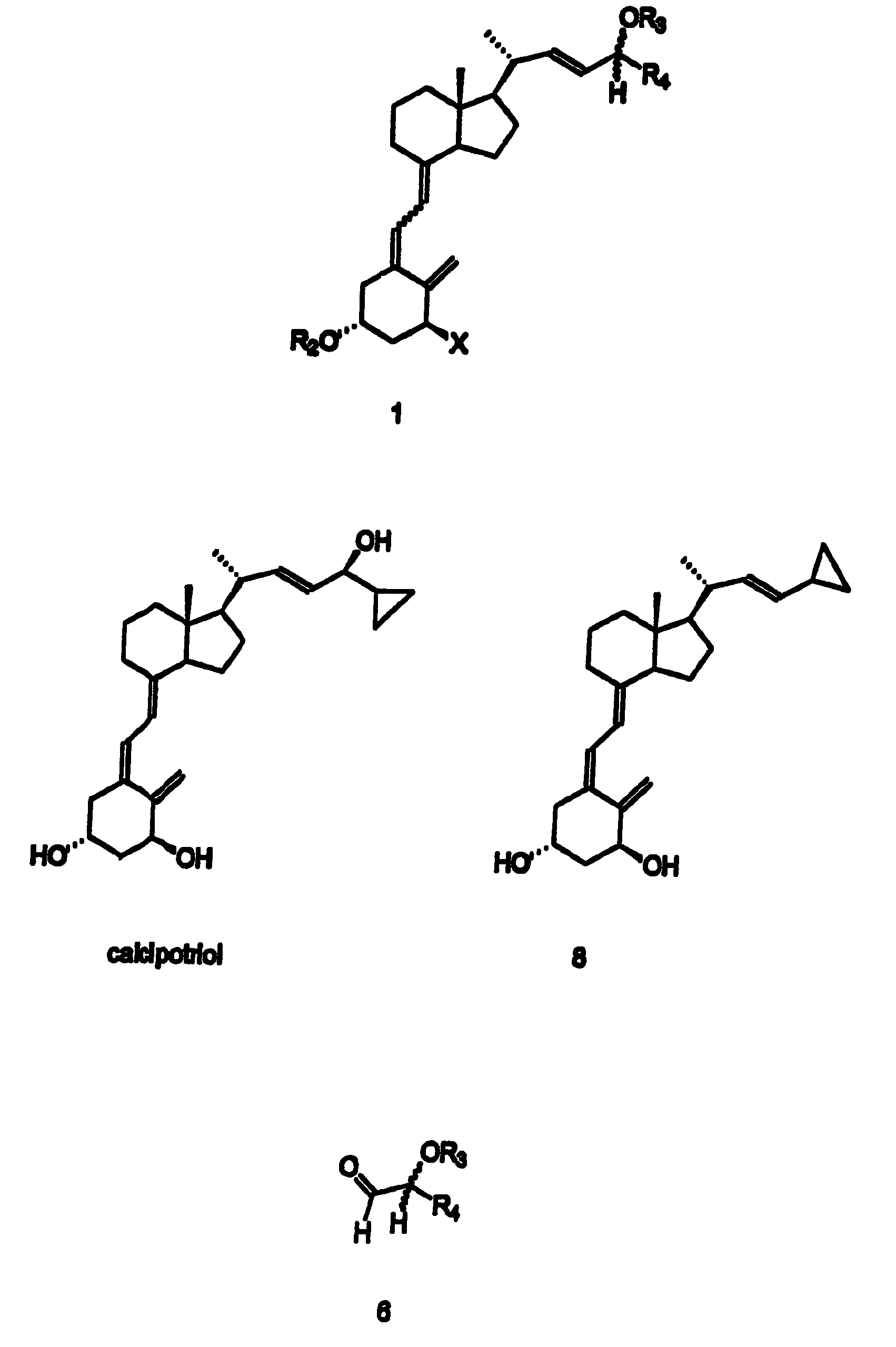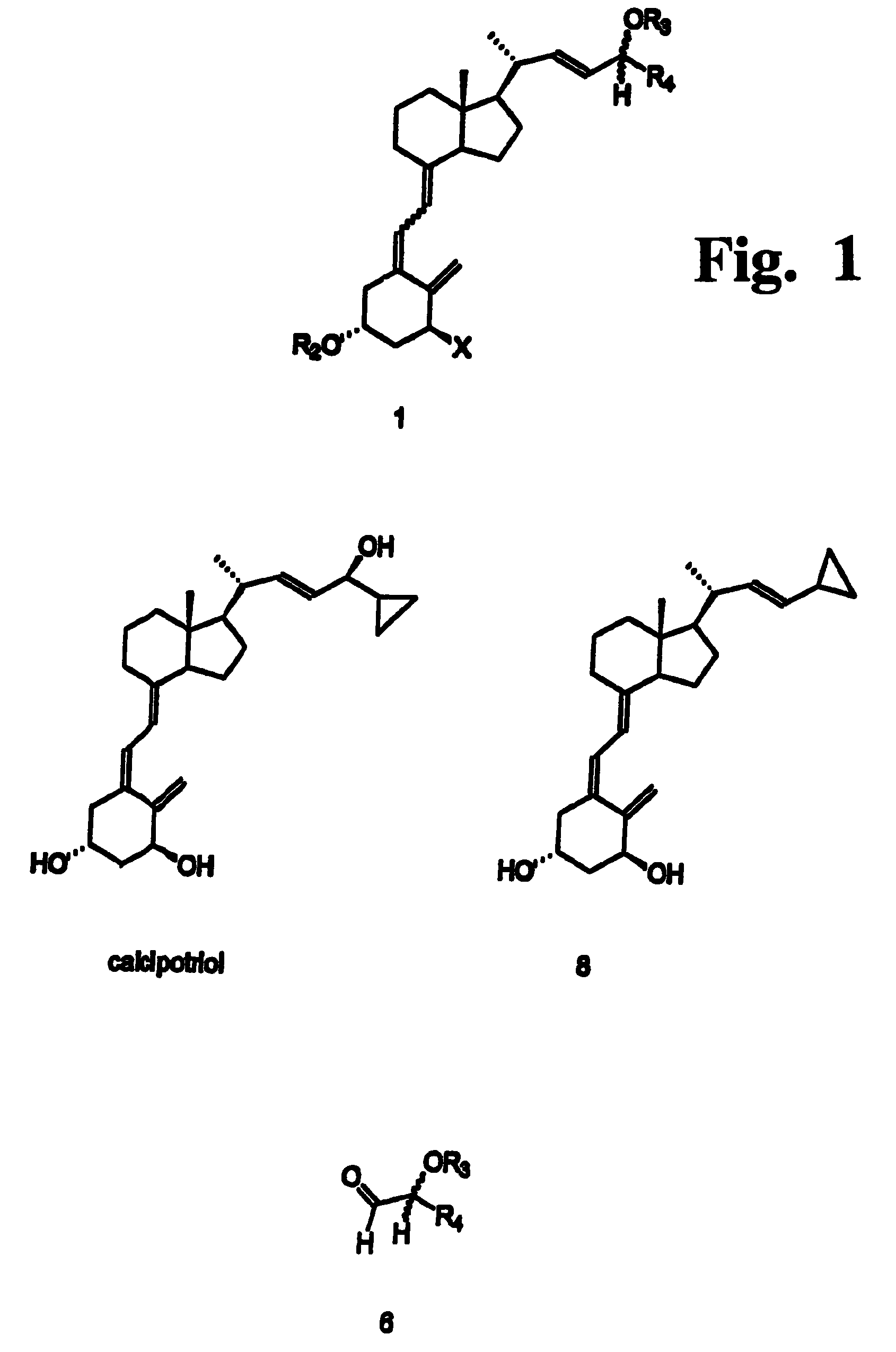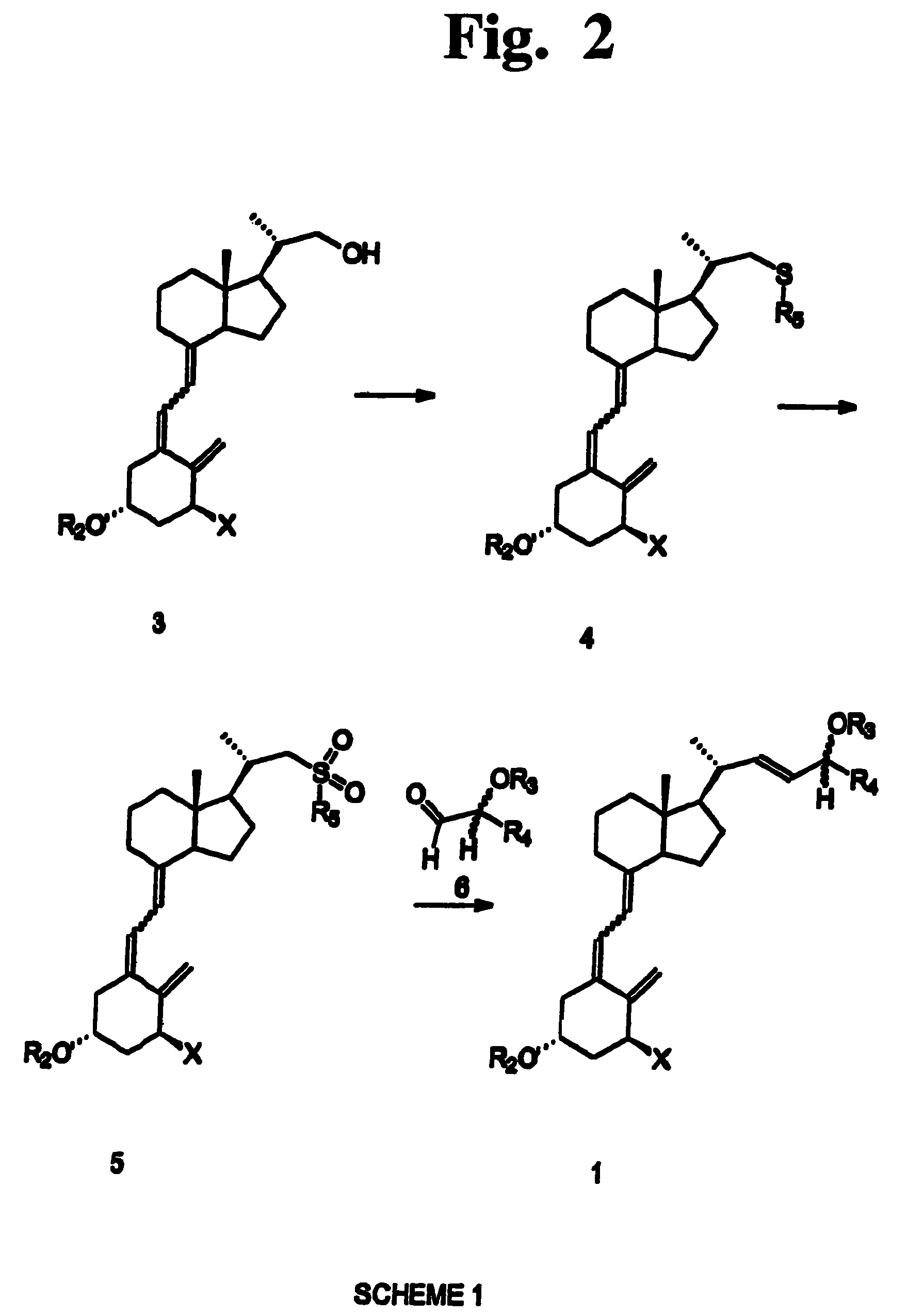Preparation of 24 alkyl analogs of cholecalciferol and non-racemic compounds
a technology of cholecalciferol and alkyl analogs, which is applied in the field of preparation of 24alkyl analogs of cholecalciferol, can solve the problems of lack of stereoselectivity, multi-step and time-consuming process, and lack of stereoselectivity
- Summary
- Abstract
- Description
- Claims
- Application Information
AI Technical Summary
Benefits of technology
Problems solved by technology
Method used
Image
Examples
example 1
[0058]The method for preparation of 24-alkyl cholecalciferol derivatives of the invention is characterized by high stereo- and regioselectivity. The C(22),C(23)-unsaturated product is obtained with the proper (22E) configuration, which is preferred due to the biological activity and the simplicity of isolation. Depending on the configuration of the starting aldehyde, the product has a defined configuration at the C(24) carbon. Moreover, the (5E) isomer can be converted by known methods into the pharmaceutically preferred (5Z) isomer. t-Butyl)dimethyl]silyloxy-2-cyclopropyl-acetaldehyde a) (1S)-1-[(t-Butyl)dimethyl]silyloxy-1-cyclopropyl-2-(4-toluenesulfonyloxy)ethane (ee=64%; 870 mg, 2.35 mmole) was dissolved in anhydrous dimethylsulfoxide (Aldrich, 15 mL). 2,4,6-Trimethylpiridyne (1.25 mL, 1.14 g, 9.4 mmole) was added and the mixture was stirred / N2. The flask with reaction mixture was placed on an oil-bath at 150° C. and the stirring was continued / N2 for 2 h. Then the reaction mixt...
example 2
[0060]{3R / S)-3-Cyclopropyl-3-hydroxy-1-propene Cyclopropanecarboxyaldehyde (Aldrich, 10.3 g, 11.0 ml, 146.9 mmole) was dissolved in an anhydrous tetrahydrofurane (150 mL). The solution was cooled / N2 do −78° C., and then, while stirring vigorously, 1.0 M vinylmagnesium bromide in THF (185 mL, 185 mmole) was slowly added. After 15 min. the cooling bath was changed for water-ice bath and the stirring was continued at 0° C. for 1 h. Then the saturated brine (10 mL) was slowly added while stirring, and then more brine (100 mL) and hexane (250 mL) were added. The phases were extracted and separated, the organic phase was washed with diluted brine twice, and then dried over anhydrous K2CO3 (50 g). The drying agent was filtered off and washed with hexane (50 mL). The combined filtrates were concentrated under vacuum (10 mm Hg, 15° C.) and dried under vacuum at the same conditions. A colourless thick oil (13.6 g, 94%) was obtained, homogenous at TLC and NMR. C6H10O; El MS m / z 98 (M+, 2), 80 ...
example 3
[0061](3R / S)-3-[(t-Butyl)dimethyl]silyloxy-3-cyclopropyl-1-propene. (3R / S)-3-Cyclopropyl-3-hydroxy-1-propene (3.00 g, 30.56 25 mmole) was dissolved in anhydrous CH2Cl2 (100 ml). The solution was cooled / N2 to 0° C. Et3N (4.95 g, 6.82 ml, 48.9 mmol) was added with vigorously stirring. Then t-butyl(dimethyl)silyl-trifluoromethane-sulfonate (Fluka, 9.13 ml, 10.5 g, 39.7 mmole) was slowly added. The stirring was continued at 0° C. for 1 h and 10% aq. KHCO3 (100 ml) was added. The cooling bath was removed and the mixture was stirred for 1 h. CH2Cl2 (100 ml) was added, the phases were separated and the organic phase was shaken three times with KHCO3 (3×150 mL) and dried over anhydrous K2CO3. The drying agent was filtred off and washed with CH2Cl2. The combined filtrates were concentrated and dried under vacuum. The crude product was purified on the column with silica gel (230-400 m, 250 g, 5% EtOAc / hexane). A colourless oil (4.72 g, 73%) yielded, homogenous at TLC and NMR; C12H24OSi; El MS...
PUM
| Property | Measurement | Unit |
|---|---|---|
| volume | aaaaa | aaaaa |
| temperature | aaaaa | aaaaa |
| temperature | aaaaa | aaaaa |
Abstract
Description
Claims
Application Information
 Login to View More
Login to View More - R&D
- Intellectual Property
- Life Sciences
- Materials
- Tech Scout
- Unparalleled Data Quality
- Higher Quality Content
- 60% Fewer Hallucinations
Browse by: Latest US Patents, China's latest patents, Technical Efficacy Thesaurus, Application Domain, Technology Topic, Popular Technical Reports.
© 2025 PatSnap. All rights reserved.Legal|Privacy policy|Modern Slavery Act Transparency Statement|Sitemap|About US| Contact US: help@patsnap.com



